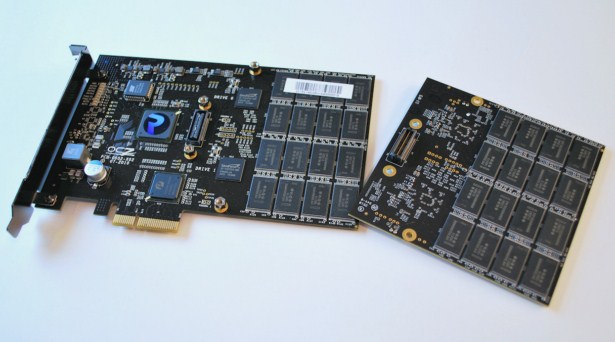OCZ RevoDrive X2 Review: Killer SSD Performance
As we work our way down toward the edge connector of the card, however, there is a Pericom PCI-X to PCI Express bridge chip and the chip controller under the OCZ "R" sticker is a Silicon Image 3124 PCI-X RAID controller.
This chip may be dated, as is frankly the PCI-X interface, but this is a hardware-based RAID controller, and as is the case with OCZ's new IBIS drive, the inherent latencies of bridging from PCI-X to PCI Express are virtually hidden. The net-net here is that OCZ not only benefits from the lower cost SI RAID controller, as well as lower density/lower cost Intel NAND Flash, but combined they offer a price/performance curve that, as we came to find out is down-right impressive.
There are still a few small caveats with the OCZ RevoDrive X2 as there is with the first gen RevoDrive. The drives DO support idle garbage collection, but do not support AHCI nor the Windows TRIM command. As such, you'll be relying on the four SandForce SF-1200 chips on the RevoDrive X2, to keep the card running at its specified performance levels after repeated reads and writes. Perhaps this sounds like a gamble and we haven't had enough time with product to give you a solid understanding of it under long-term, real-life test conditions, but we'd venture prospective customers of the RevoDrive X2 will be in good hands with SandForce's robust garbage collection algorithms keeping things neat and tidy on the drive.














